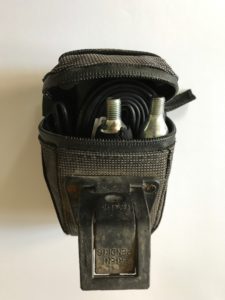So you’ve decided to go for a ride, decided on what to wear (after checking the weather), checked the bike for anything untoward, put a little air in the tyres, and chosen your favourite jersey. Unless you have a plan you may muse a while deciding which route you’ll take based on time available, whether you need to train or if it is a social ride.
Right, you think you are ready. You clip in (assuming you use cleats), push off and get your mind set on enjoying a good ride. There may be a few lingering thoughts as you warm up, “do I have everything I need?”, “Am I prepared for a puncture”…there’s a faint possibility of there being other problems, but what could possibly go wrong, and how will I cope ?
Let’s face it, cyclists do need to be somewhat self-sufficient, but in my experience, if you are stopped by the side of the road, unless you are in a very isolated spot, another cyclist will at some point pass by, and if they are worth their salt, will ask if you are okay, and stop to help if you ask for it. In such situations, a quick thumbs-up is good enough to indicate that you’ve got this under control, while a quite British “excuse me sir/madam” should be enough to beckon them to your aid.
Before we go into detail of the types of problems, let’s take a moment to make sure we are prepared for most eventualities…and I am assuming you have checked your bike before you set off that it it in good condition, or as is called, “fine fettle”, the verb of which is “fettling”, google it 🙂
So what is essential to take with you, and what is nice to have. The below is my list based on experience, it may not be exhaustive, so feel free to give feedback on what you take if you like, this could make interesting reading.. p.s. goats and aqua-lungs do not count :—)
1. Essentials. Spare inner tube(s), fully charged rear light, a fully charged mobile phone (in a waterproof bag), tyre levers, pump, small multi-tool, water bottle/bidon(s), a couple of quid, light rain jacket. Optionally a GPS computer (only because I am a bit of a data freak, checking my heart rate, cadence, Strava segments, etc) or Smartphone running Strava, MapMyRide, etc. Plus an ’emergency’ energy bar/gel, just in case !
2. Nice to haves. CO2 canisters/valves, front light (to be seen), chain splitter (in case you break the chain), tyre boot (a small piece of rubber that can be used if your tyre suffers a gash – a £5 note does the same trick), second backup mobile phone (an old Nokia-type phone with days of battery life is best), a little food such as a snack bar, banana, peanut-butter sandwich…anything to keep you going, and finally a map if you don’t have a GPS computer and don’t like getting lost.
To finish off the point on nice-to-haves, if you get one of those pay-as-you-go cheap phones as a backup, make sure you have programmed in your emergency phone numbers – I can remember one or two numbers off the top of my head, but as we rely so much on our smartphone, we rarely memorise phone numbers nowadays.
The above may seem like a lot of kit…however the total weight is less than 500grams, plus the tube, canisters, valve, repair kit and levers will all fit into your saddle bag.
Next time we will delve into the world of punctures, how you can minimise them happening to you, and tips for getting back on the road as quickly and painlessly as possible.
Happy Riding, Grant
